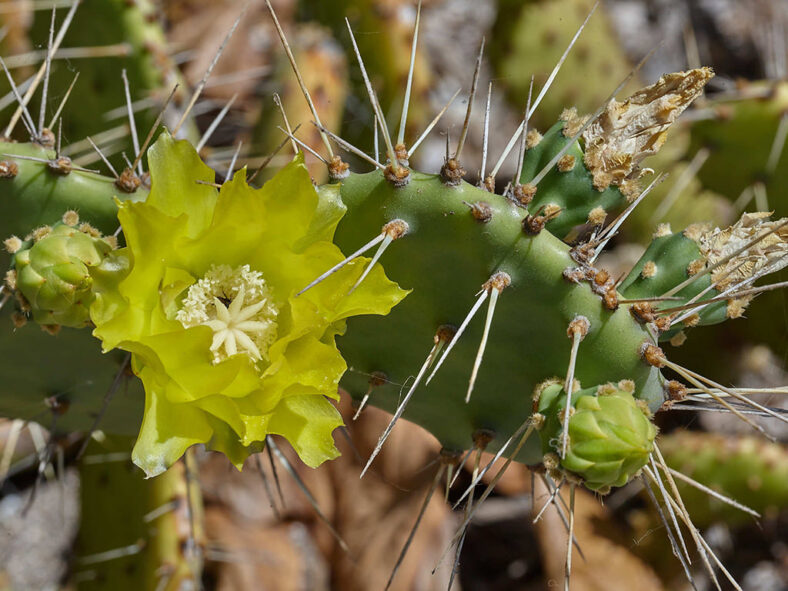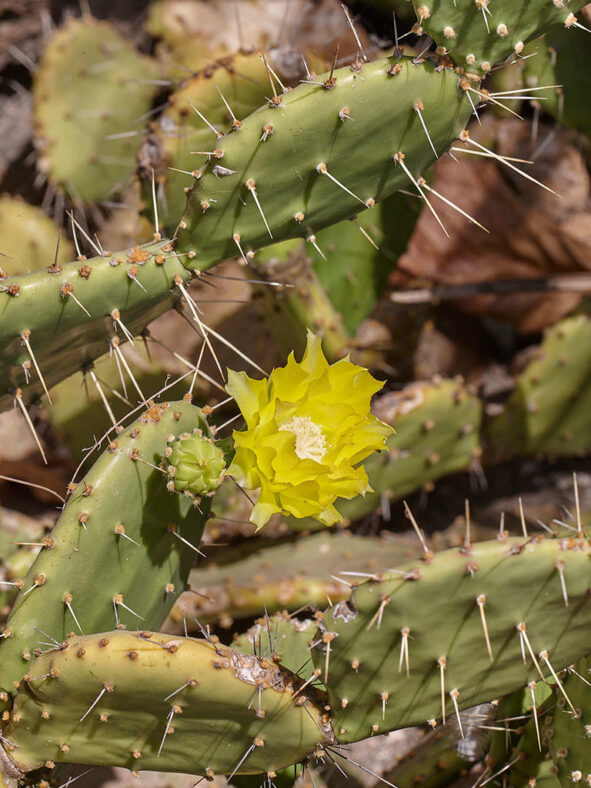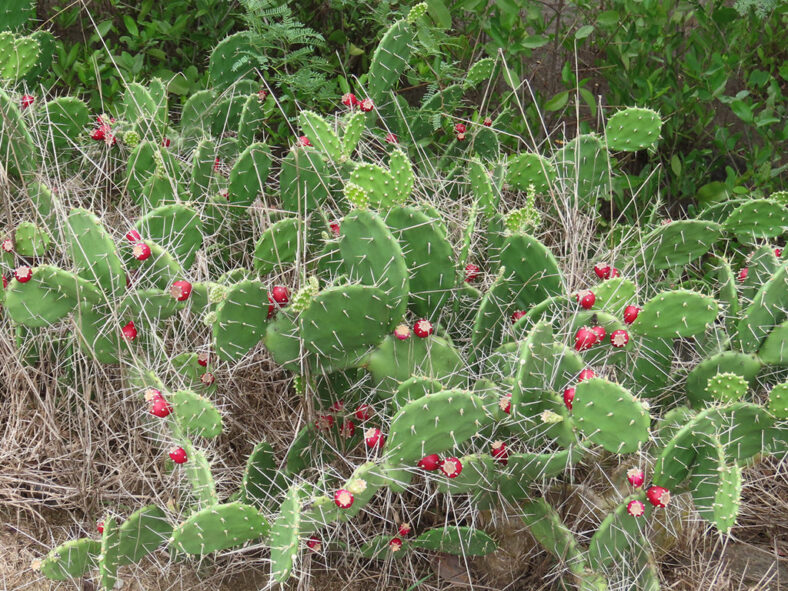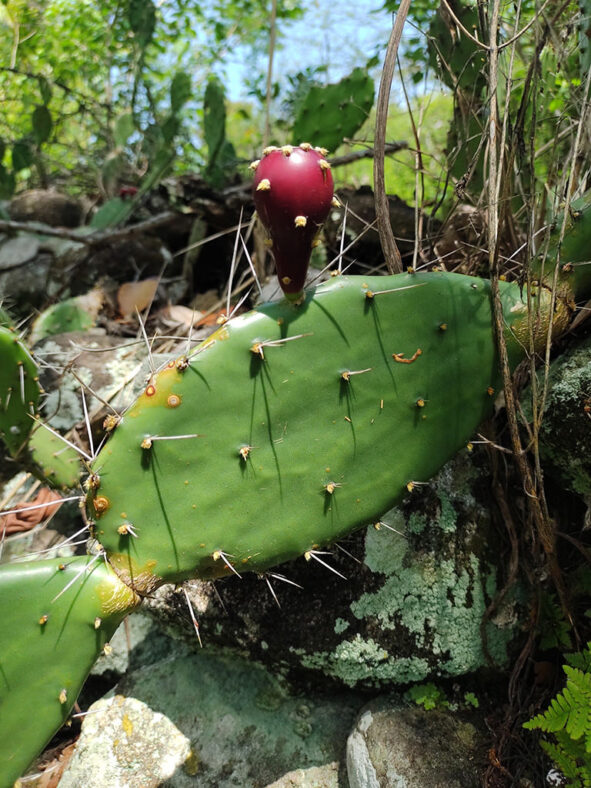Opuntia guatemalensis resembles Opuntia decumbens, but its pads are smooth and shiny, and its flowers are much smaller. Nathaniel Lord Britton and Joseph Nelson Rose first described this species in 1919.
Scientific Name
Opuntia guatemalensis Britton & Rose
Common Names(s)
Guatemalan Prickly Pear
Scientific Classification
Family: Cactaceae
Subfamily: Opuntioideae
Tribe: Opuntieae
Genus: Opuntia
Etymology
The specific epithet "guatemalensis" (pronounced "gwa-teh-mah-LEN-sis") refers to Guatemala, where this species was first discovered.
Origin
Opuntia guatemalensis is native to Guatemala, Honduras, Nicaragua, and Costa Rica. It grows from sea level to 985 feet (300 m) in forests and disturbed areas.
Description
Opuntia guatemalensis is a low-growing, spreading cactus with either upright or prostrate branches that consist of oval or obovate segments, commonly known as pads or nopales. The pads are smooth and deep green, occasionally with dark blotches below the areoles, and spines present over two-thirds to three-quarters of each pad. The areoles are small, slightly raised, and filled with light brown or tan wool. Each areole typically bears one large spine and possibly one or two smaller spines. When young, the spines are shiny white with blackish tips and turn gray as they age. Most spines are reflexed and somewhat spreading, with the larger spines often positioned at right angles to the pad.
In the summer, Opuntia guatemalensis produces flowers ranging from pale yellow to golden yellow. The flowers can reach up to 2.4 inches (6 cm) in length and 2 inches (5 cm) in diameter. The edible fruits are red and pear-shaped, sometimes having a stipe-like base, and can reach up to 1.2 inches (3 cm) in length.

How to Grow and Care for Opuntia guatemalensis
Light: Opuntia guatemalensis thrives in full sun, but some shade during midday and afternoon can prevent sunburn in hot climates. When grown indoors, it works best in a window that receives sunlight for 6 hours a day.
Soil: This cactus requires a well-draining soil mix. You can use a commercial cactus potting mix or create your own.
Temperature: Opuntia guatemalensis is highly tolerant of high temperatures and prefers cooler temperatures in winter. It grows best in USDA Plant Hardiness Zones 9a to 11b, with average minimum winter temperatures ranging from 20 to 50 °F (-6.7 to 10 °C).
Watering: From spring to fall, water moderately and let the soil dry out completely before watering again. In most areas, rainfall will be enough for established plants. If potted, never let the container sit in water. Suspend watering during the winter.
Fertilizing: Opuntia guatemalensis does not need fertilizer when planted in the ground. However, if grown in a container, it will benefit from fertilizing during the growing season. Apply a water-soluble fertilizer. Suspend feeding during the winter when the plant goes dormant.
Repotting: Repot only when the cactus becomes potbound or is too large and unstable in its container. Choose a slightly larger container with drainage holes at the bottom. The best time for repotting is late winter or early spring.
Propagation: Opuntia guatemalensis can be propagated by stem segments or seeds. The easiest method is using stem segments, which yields faster results. Take the stem segments in early summer for best results, and sow the seeds in late spring.
Learn more at How to Grow and Care for Opuntia.
Toxicity of Opuntia guatemalensis
Opuntia guatemalensis is not toxic to humans or pets. However, keeping this plant away from pets and children is best, as its harmful spines and glochids may cause skin irritation.
Links
- Back to genus Opuntia
- Succupedia: Browse succulents by Scientific Name, Common Name, Genus, Family, USDA Hardiness Zone, Origin, or cacti by Genus
Photo Gallery
Click on a photo to see a larger version.


